Trekking In Cental Asia (Kyrgyzstan & Kazakhstan) – A Practical Adventure Primer for Indian Travellers
This guide launches our very first international programme, built only after our on-ground recce in late August early September 2023, when Tatai, Subho, Vineet and Sapta trekked the routes, interviewed local guides and road-tested every jeep track featured here. Every photograph you see was taken by one of us, so the mountains you’re about to read about are exactly the mountains we stood on.
Most of us plan a big-mountain break around the Himalaya—usually India or our neighbour Nepal . Yet just four to five hours northwest by air, another massif rises: the Tien Shan, the “Celestial Mountains”.
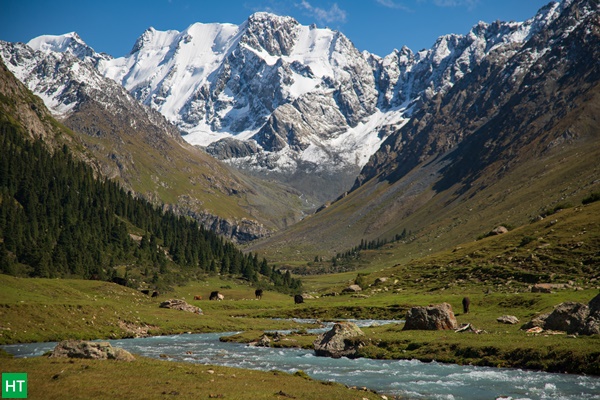
Here in Central Asia, shared by Kyrgyzstan (KG) and Kazakhstan (KZ), the numbers tilt in our favour. From downtown Bishkek or Almaty you see fresh snow on the skyline; the next morning a taxi lifts you to spruce forests at 2,500 m—well before lunch. Visas are hassle-free, daily costs sit well below a European trek, and even the “busy” summer trails feel spacious compared with EBC, Annapurna, or Kashmir Great Lakes.
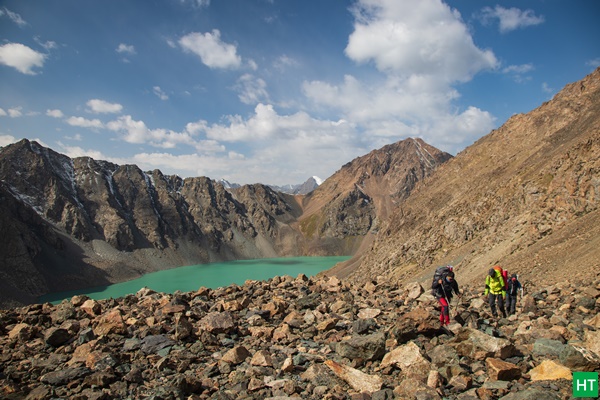
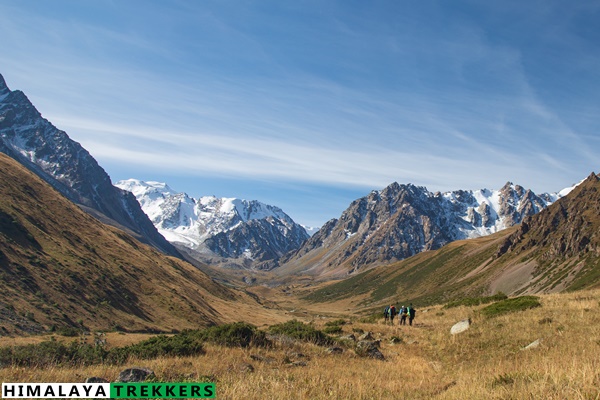
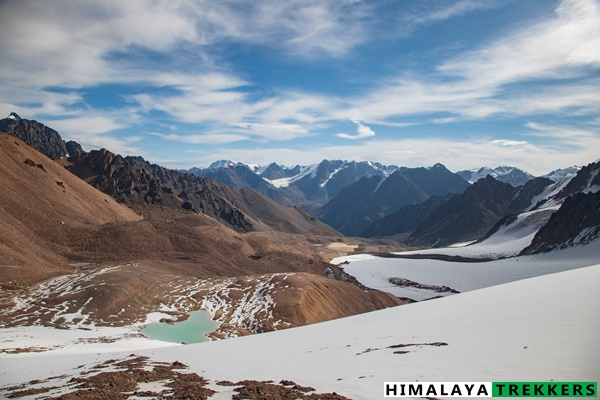
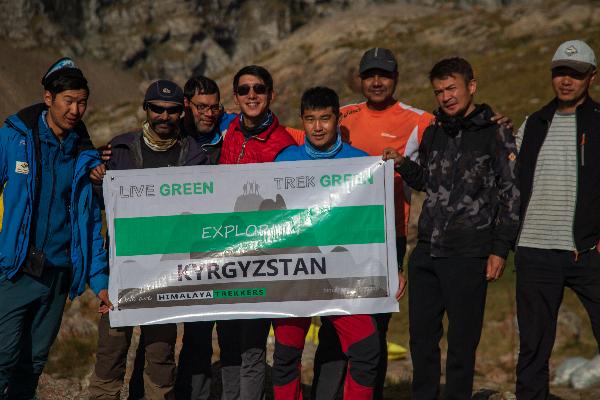
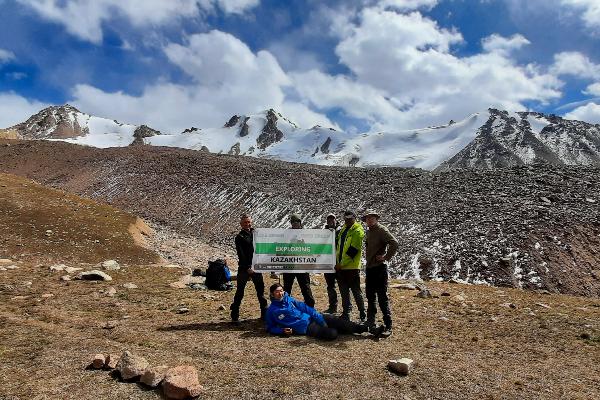
Where and How Is Central Asia?
Picture a rough diamond wedged between Russia to the north, China to the east, Iran to the southwest and the Caspian Sea to the west. That diamond is Central Asia, a sprawl of nearly four million km²—a shade larger than India yet home to barely 75 million people. Five flags fly here: Kazakhstan, Kyrgyzstan, Tajikistan, Uzbekistan and Turkmenistan.
Mountains set the rules. Three chains, in fact:
Tien Shan – a 2500-km backbone crossing Kyrgyzstan and Kazakhstan before bending into China.
Pamir – the hard knot anchoring Tajikistan and brushing the Afghan frontier.
Altai girds north-east Kazakhstan into Mongolia
Between ridges sways the Kazakh Steppe—about 804 000 km² of near-treeless grassland, the largest of its kind on Earth.
For trekkers, two countries place the peaks right on the city edge. Bishkek sits under the Kyrgyz Ala-Too; Almaty leans against the Zailiyskiy Ala-Tau. Land, grab a taxi, and in little more than an hour you’re lacing boots among spruce at 2,500 m. That fast jump from tarmac to treeline is why Kyrgyzstan and Kazakhstan make the quickest, most practical alpine doorway for Indian travellers keen to trade familiar Himalaya paths for fresh, uncluttered horizons.
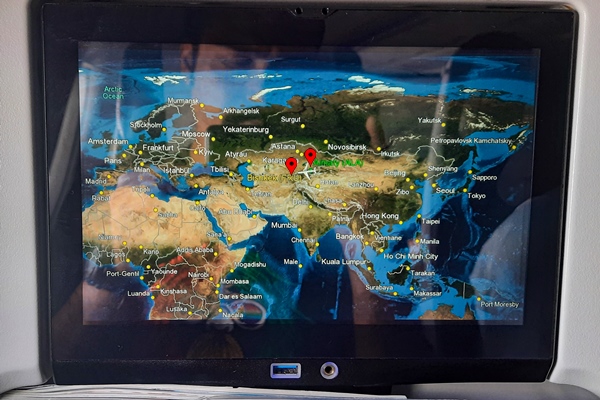
Why begin with Kyrgyzstan (KG) and or Kazakhstan (KZ)—and park the other Stans for later?
Central Asia offers five flags, yet only two let you step off a jet and touch glacier-fed valleys before lunch. Kyrgyzstan and Kazakhstan share the Tien Shan, a 2,500-km spine whose foothills all but graze their city limits. That single fact—mountains on the doorstep—shrinks visa days and taxi fares into something an Indian long-leave plan can stomach.
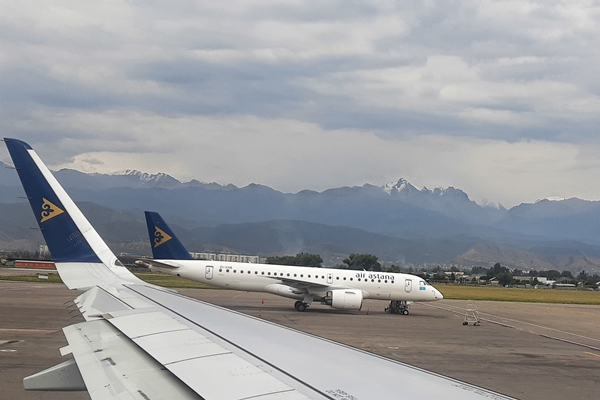
Four hard-to-argue perks:
Doorstep peaks. Ala-Archa Gorge is 40 km south of Bishkek; Big Almaty Lake lies an hour above Almaty. Day walks with glacier views fit neatly into a seven-day escape.
Visa & border ease. Indians enter Kazakhstan visa-free for 14 days (Govt. Decree 464/2022) and secure a Kyrgyz e-visa in 3–7 working days. The two capitals Bishkek and Almaty sit 230 km apart by smooth highway with an easy passport control office on both side of the border.
Practically no time zone difference, Bishkek (KG) is 30 mins ahead of IST, whereas Almaty time zone in KZ lags 30 mins to IST.
Guaranteed altitude. Kyrgyzstan averages 2,988 m—fourth-highest country after Bhutan, Nepal and Tajikistan—while Kazakhstan, at 2.7 million km², is the world’s largest landlocked country with neverending steppe, yet crowns the northermost 7 thousander peak to climb (Khan Tengri)
Trivia: Kazakhstan, being the largest landlocked country, borders the Caspian Sea, which in turn is the world’s largest inland body of water.
Quick logistics cheat-sheet
Fast routing, daylight arrival –
Delhi → Almaty nonstop (Air Astana/IndiGo) blocks 3 h 20 m; same-ticket connection KC 109 reaches Bishkek in ≈50 m, so a late-morning Delhi departure still lands you in Bishkek before the 20:40 July sunset.
Direct to Bishkek option – Aero Nomad now runs a weekly Delhi → Bishkek nonstop (2 h 45 m).
Money & tips – you’ll find exchange booths and ATMs everywhere from Almaty & Bishkek airports to trek hubs like Karakol and Osh; mid-2025 rates sit at 1 USD ≈ 87 KGS or ≈ 520 KZT (≈ ₹85), and most hosts happily accept small tips in clean USD or EUR notes if you run out of local cash.
SIM & data – Keep your Indian number: Airtel’s 10-day global pack (₹2 999) covers both KG & KZ, Jio travellers pack: ₹1 499 | 14 days | 2 GB + 100 mins + 100 SMS, valid in both KZ & KG;
Local swap: Almaty airport Beeline tourist SIM 25 GB ≈ 5 000 KZT (₹900); Bishkek Manas kiosks sell O! unlimited-data SIM ≈ 500 KGS (₹450).
Move around cheap – In cities, use the Yandex Go app—airport to downtown Bishkek is ~500 – 600 KGS (≈₹500); fares show upfront and cash payment is preferred. In Almaty 10 km cross-town in a new 4 seat sedan cost ≈ ₹250 – 300.
Easy border shuttle – shared taxi or marshrutka on the ALA↔FRU run costs ≈5 000 KZT / 1 000 KGS (₹850–900) and makes the 235 km dash in about five hours, immigration stop included. A private taxi for 4 to 5 persons is approx ₹ 6000
Self-drive freedom – Airport SUVs rent from $60–80 / day; left-hand drive, International Permit required. Tank up at $0.47 / L in KZ or ≈ 74 KGS / L in KG—roughly half the Indian pump price.
Beds to suit every wallet –
Guesthouses/B&B: Bishkek private rooms $45–60.
Mid-range 3★ hotels: Almaty averages $60–75; 4★ nudge $100+, Airbnb studios from $35.
Shared dorms start from $10/bed and some provide private woorms with shared kitchen zone.
Sit-down lunch and street food price-point – Bishkek business-district “menu del dia” ~ 400 KGS ≈ $4.6 / ₹380; in Almaty a local café set-lunch runs 2 450 KZT ≈ $4.7 / ₹390. Hot samsa on Bishkek sidewalks 70 KGS ≈ $0.8 / ₹65; a single shashlik skewer in Almaty food-stalls 1 000 KZT ≈ $1.9 / ₹160.
English help is doable – Licensed trekking guides run ≈ 2 500 – 3000 KGS / day and some speak good English ($60/day); specify in advance. Rental-car desks and Yandex drivers mostly operate in Russian—learn a few basics: Privyet (hello), Spasibo (thank you), Da/Nyet (yes/no).
And what about the other Stans?
Tajikistan own Pamir and Fann Mountains and are now accessible with a weekly nonstop flight from Delhi to Dushanbe (approximately 2 hours 50 minutes) by Somon Air/Aero Nomad. Indians can easily obtain an e-visa online. However, the best trails still require a 1,000-kilometer 4×4 haul down the rough-cut Pamir Highway or turquoise lake circuits of the Fann Mountains, and high passes inside GBAO require a separate permit — we’re planning a scouting trip for 2026 after learning about the road conditions.
Uzbekistan dazzles with Silk Road domes and caravan routes, yet 80 % of its land is steppe or desert—fantastic for history buffs, thin for alpine trails.
Turkmenistan still asks most tourists for a pre-approved invitation; its new e-visa law is ink-dry but detail-light.
So, if you want snow lines outside the hotel window, border checks that move like a metro swipe, and trailheads that start where the city stops, pick Kyrgyzstan or/and Kazakhstan first. They give Indian trekkers the broadest mix of peaks, lakes and canyons with the least paperwork—and that alone is reason to start blocking leave.
Climate & Best time to visit
Central Asia runs on a true continental clock: summers are hot and dry below 1 500 m, yet snow can linger on 3 800 m passes until mid-June. June-September is prime for most foot-based trips; July–August adds the stable windows big-mountaineers need; winter flips the script, turning Shymbulak’s gondola lines and Kyrgyz heli-ski valleys into powder zones. The grid below cross-matches the main adventure styles with the four broad seasons, using long-term climate data and operator schedules published for the Tien Shan and Pamir ranges.
Central Asia’s “high” months differ by activity. Below is a quick‐reference grid drawn from long-term climate data, national park opening dates, and local operator schedules. Use it to match your preferred style of adventure to the right travel window.
| Activity / Season | Spring Apr – May |
Summer Jun – mid-Sep |
Autumn Sep – Oct |
Winter Nov – Mar |
|---|---|---|---|---|
| Trekking (2 500 – 3 800 m) |
Lower trails snow-free; high passes still patchy above 3 300 m. | Prime window – dry paths, yurts pitched, 18–22 °C at 2 500 m. | Cool air, golden larch; first snow from mid-Oct on >3 600 m passes. | Valley walks only; ridges buried. |
| Big-mountain climbs (6 000 – 7 000 m) |
Too much avalanche risk; BC roads muddy. | Summit season – stable weather mid-Jul → late-Aug. | Winds rise fast; snow rebuilds cornices. | Technical ascents only; −20 °C and short days. |
| Skiing / Heli-ski | Late-season piste at Shymbulak until late-Apr. | — | — | Powder peak Jan–Mar in Ala-Too & Suusamyr heli-zones; lifts Dec–Mar. |
| Horse trekking (Song-Kul, jailoo) |
Pastures thaw mid-May; yurts go up. | Ideal – green jailoo, long daylight. | Herds descend by early Oct; camps close. | Tracks iced; horses stabled in valleys. |
| Jeep & canyon touring (Charyn, Issyk-Kul loop, Pamir Hwy) |
Good – flowers, mild temps, low dust. | Hot steppe days; dust and flash-storm wash-outs. | Shoulder best – clear skies, comfy 15–25 °C. | Pamir drivable but −10 °C dawns, black ice; some canyon roads shut. |
Flagship trekking hubs
1. Karakol, Kyrgyzstan
Ala-Kul Lake—a turquoise bowl under knife-edge ridges—is the classic three-to five days circuit. Add a rest day in Altyn Arashan: soak in riverside hot springs while glaciers glow overhead. Our upcoming product: Ala-Kul Trek + Issyk-Kul & Bishkek (ala-kul-trek-issyk-kul-bishkek).
2. Osh & the Southern Tien Shan, Kyrgyzstan
Osh airport drops you within four hours of Peak Lenin Base Camp. Trails here graze 7 000 m giants yet start in rolling pasture. Note: climbs beyond BC or east toward Enilchek glacier skirt China’s border; secure that border permit before arrival.
3. Almaty, Kazakhstan
Ride the Shymbulak ski lifts above Medeu, swap gondola ride, start from a suitable location and step straight onto the high shoulder of the Zailiyskiy Ala-Tau. From here you can crest Tourist Pass or skirt east to Talgar Pass, both routes giving glacier views that spill north toward the steppe. Drop south-west on scree and alpine turf and you land, almost theatrically, at the turquoise bowl of Big Almaty Lake—a multi day traverse that compresses cable-car ease, ridge-top drama, and postcard water all in one outing.
Signature treks at a glance
| Route | Country / Region | Days | Max Altitude | Route Highlights |
|---|---|---|---|---|
| Ala-Kul Lake Trek | Karakol, Kyrgyzstan | 3–5 | 3 850 m | Alpine circuit over Ala-Kul Pass, turquoise lake vistas, finish in Altyn Arashan hot springs |
| Song-Kul Pony Traverse | Central Kyrgyzstan | 3–4 | 3 016 m | Horse-back yurt journey across rolling jailoo pastures, nomad culture, mirror-flat lake |
| Peak Lenin Base-Camp Hike | Osh, Kyrgyzstan | 2–3 | 3 600 m | High-steppe walk to one of the world’s easiest 7 000-m peaks’ base camps, yurt option |
| Tourist Pass → Big Almaty Lake | Almaty, Kazakhstan | 2–4 | 3 954 m | Lift to Shymbulak, cross Tourist & Talgar Passes, descend to glacial-blue Big Almaty Lake |
| Kolsai–Kaindy Lakes Traverse | Southeast Kazakhstan | 2 | 2 700 m | Pine-rimmed alpine lakes, sunken trees of Kaindy, Kazakh mountain villages |
| Tien Shan Twin-Country Explorer | KG + KZ | 10–14 | 3 850 m | Combines Ala-Kul & Tourist Pass routes, cultural stopovers, seamless cross-border logistics |
| Jeti Oguz → Teleti Valley → Ala-Kul Trail | Terskey Ala-Too, Kyrgyzstan | 4–5 | 3 860 m | Begin at red-sandstone Jeti Oguz cliffs, crest Teleti Pass, camp by Ala-Kul Lake, soak in Altyn Arashan hot springs |
| Ak-Suu Traverse | Issyk-Kol, Kyrgyzstan | 7–9 | 3 860 m | 109 km point-to-point from Jyrgalan to Jeti Oguz via Boz-Uchuk Lakes, Terim Tor & Ala-Kul Passes, finish in hot springs |
Cultural sidebars, fun facts & tips:
- Almaty’s wild apple stands (Malus sieversii) are the genetic ancestor of today’s orchard fruit; City’s old name Alma-Ata means “Father of Apples”.
- The Epic of Manas runs to ≈5,00,000 (half a million lines, dwarfing the Iliad and Odyssey combined.
- Arslanbob shelters the world’s largest natural walnut forest (≈600 km²); legends trace its nuts back to Alexander’s soldiers.
- Sputnik 1 and Yuri Gagarin both blasted off from Kazakhstan’s Baikonur Cosmodrome, still the busiest spaceport outside the USA.
- Handshakes first, names later. In both Kyrgyz and Kazakh custom, the greeting is a firm shake with the right hand—do this with every adult you meet, even the jeep driver’s cousin who pops over to say hello.
- Bread is never wasted. Flatbread (nan/lepeshka) is set face-up and never thrown out. If you can’t finish, hand the piece to your host or wrap it for later rather than leaving crumbs on the plate.
- Shoes off at the yurt door. Felt floor-coverings double as beds. Drop boots outside, step in with socks, and sit cross-legged or with knees folded—stretching feet toward the centre is considered sloppy.
- Tea is bottomless—accept the first, sip the second. Hosts will refill your bowl (piala) after every sip; a polite “No more, thank you” is to hold a palm over the rim.
- Modest layers beat techy tights. Shorts are fine on the trail, but carry long trousers for village sections and mosque visits. Women travellers do not need a headscarf except when entering a prayer room; a light buff in the daypack covers the edge cases.
- Market maths is friendly bartering. Bargain in the bazaar with a smile: offer about 70 % of the first price; expect to settle around 80 %. Haggling over taxi fares is normal too—agree before the engine starts.
- Language basics open doors. A handful of Russian hellos (Zdravstvuyte) and thank-yous (Spasibo), plus the local “cheers” (Chon rahmat in Kyrgyz and Rakhmet in Kazakh), earn instant goodwill.
- Permission first, photo next. Ask before you click— and if anyone’s in uniform, keep the camera down unless they invite you. Shepherds and stallholders are generally welcoming; just ask politely. Don’t shoot at all without explicit clearance for sentitive sites.
- Cash beats cards outside cities. ATMs scatter Bishkek and Almaty but vanish in the countryside. Change adequate rupees to USD before departure; swap those for som or tenge on arrival for the best rate at money exchanges.
- Ramadan rhythm. If your trek falls in the fasting month, cafés open late and close early in small towns; stock snacks accordingly and accept evening invitations—they often end in music and more tea.
Take these courtesies onto the trail, and your next cup of kumis will come with a wider grin and an extra ladle of cream.
Central Asian Cuisine: Veg & Non-Veg
Central Asian diets are traditionally meat-heavy, but vegetarian-friendly dishes abound.
Everyday Dishes (meat + dairy basics)
- Plov – rice fried with carrot, cumin and mostly lamb; served hot by noon in every city bazaar cauldron.
- Lagman – hand-pulled noodles in peppery broth; ask bez myasa for a veg bowl.
- Manty – palm-sized steamed dumplings; fillings change—lamb year-round, pumpkin/potato in autumn.
- Shashlik – skewers of lamb or chicken; watch for grill smoke at roadside stalls.
- Beshbarmak – Kazakhstan’s flat-noodle dish topped with boiled horse meat, order one plate to share if you are upto.
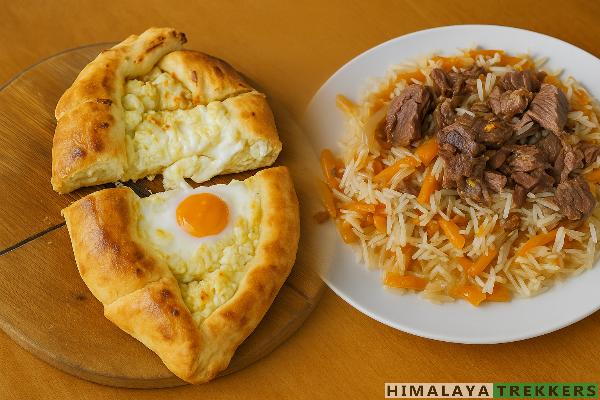
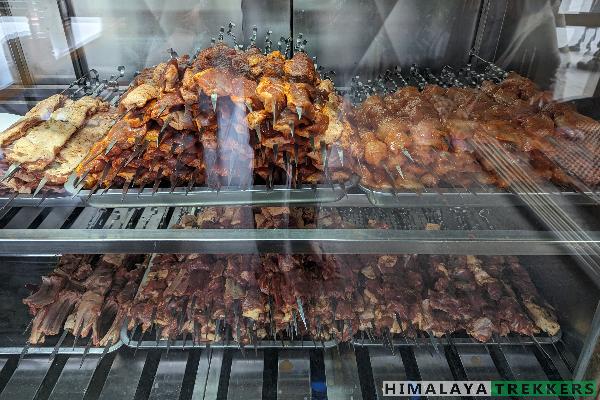
Vegetarian & “veg-possible” options — easy to find in cities
- Ashlyan-fu – cold glass-noodle soup with vinegar and chilli; veg by default, sold at Osh Bazaar and Karakol food courts.
- Pumpkin samsa – clay-oven pastries; look for orange-dot signs in Bishkek and Almaty bakeries.
- Veg lagman – most café menus list a meat-free column; double-check bez myasa.
- Salat vinaigrette – beet, potato, cucumber salad; always meat-free, available in cafeteria lines.
- Fresh fruit plates – melons, apples, grapes flood markets June – August.

Grab-and-go on the highway
- Roadside nan/katama stalls – round bread, ideal with cheese or jam from your pack.
- Mini-markets at fuel stations – instant noodles, biscuits, bottled ayran (salted yoghurt drink).
- Grill shashlik wagons – set up at bus stops; even vegetarians can buy grilled peppers or corn.
- Produce trucks – farmers park near crossroads selling crates of apricots or watermelons by the slice.
Carry a small spice or chaat-masala sachet and you can turn any basic noodle cup or bread-and-cheese pit-stop into a flavourful trail meal.
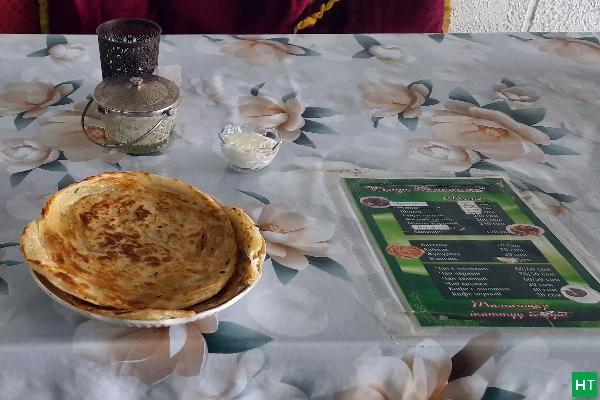
So if the Himalaya has been your classroom, think of Central Asia as the graduation fieldtrip—same altitude buzz, brand-new skyline, and a visa queue that moves quicker than your pulse at 3 000 m. Pack the curiosity, we’ll sort the permits, yurt beds and that first cup of kumis under the Tien Shan stars. Ready for a different compass point? Drop us a ping or fill in the enquiry form below and let’s plot the route.
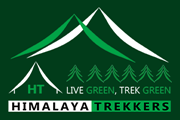
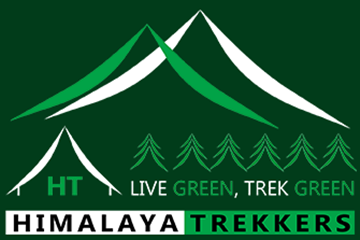

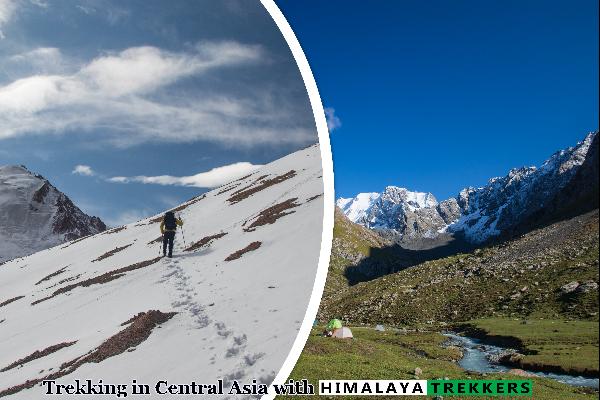





Comments